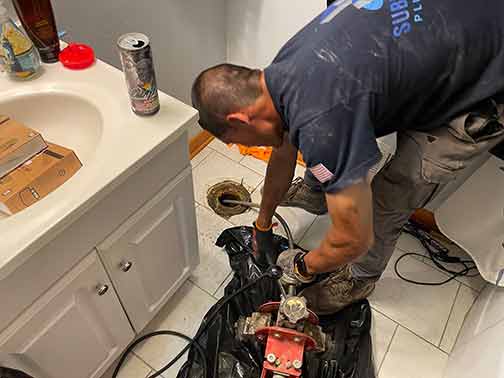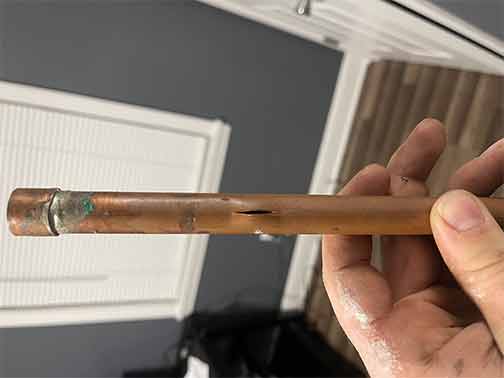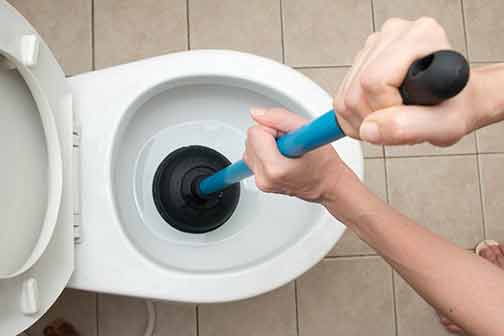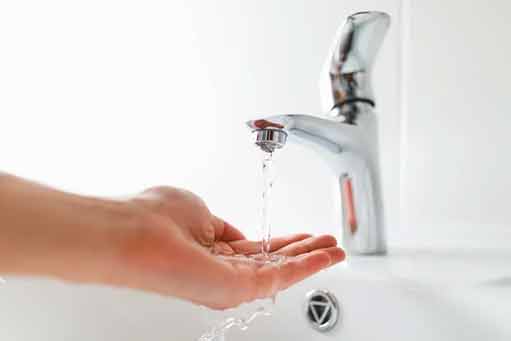
Plumbing emergencies can happen without warning and can cause significant damage to your property if not addressed promptly. While it is always recommended to call a professional plumber to fix the issue permanently, there are certain temporary measures that you can take to mitigate the damage and prevent further complications. In this article, we will discuss how to react and temporarily fix common home plumbing emergencies.
Reacting to a Plumbing Emergency
When faced with a plumbing emergency, it is important to remain calm and take immediate action. Here are some steps you should follow:
- Turn off the water supply: The first step in any plumbing emergency is to shut off the water supply to the affected area. Locate the main water shut-off valve in your home and close it to prevent water from causing more damage. This valve is typically located near the water meter or where the main water line enters your property.
- Assess the situation: Once the water is shut off, assess the severity of the problem. Is it a burst pipe, a clogged drain, or a leaking fixture? Understanding the nature of the problem will help you determine the next course of action.
- Protect your belongings: If there is excessive water accumulation or a risk of water reaching valuable belongings or electrical outlets, remove them from the affected area or cover them with plastic sheets or tarps to prevent damage.
- Contact a professional plumber: While you may attempt temporary fixes, it is crucial to call an emergency plumber as soon as possible. A professional will have the expertise and tools to perform a long-term solution.
Temporary Fixes for Common Plumbing Emergencies
1. Burst or Leaking Pipes
If you encounter a burst or leaking pipe, follow these temporary steps:
- Locate the source of the leak: Identify the exact location of the burst pipe emergency. This will help you focus your efforts on fixing or containing the issue.
- Turn off the water supply: Use the main shut-off valve to stop the water from flowing into the affected pipe.
- Apply a pipe clamp or rubber patch: If the burst is small or the leak is manageable, you can use a pipe clamp or rubber patch to temporarily seal the damaged area. Ensure that the affected portion is clean and dry before applying the patch.
- Wrap the area with a rubber gasket and hose clamp: In the absence of a pipe clamp or rubber patch, tightly wrap the damaged section with a rubber gasket or rubberized tape. Secure it with a hose clamp or stainless-steel zip tie.
2. Clogged Drains
A clogged drain can cause water backup and potential flooding. Here’s what you can do:
- Use a plunger: Start by using a plunger to try and dislodge the obstruction. Ensure the plunger creates a tight seal around the drain and vigorously plunge up and down to create suction.
- Try a drain snake or auger: If the plunger does not work, a drain snake or auger can be used to break up or remove the clog. Insert the tool into the drain and rotate it to dislodge the obstacle.
- Use a mixture of baking soda and vinegar: For minor clogs, you can try pouring a mixture of baking soda and vinegar down the drain. Let it sit for a few minutes, then flush with hot water.
- Avoid using chemical drain cleaners: Chemical drain cleaners can be harsh and may cause damage to your pipes. It is best to avoid them, especially in older plumbing systems.
3. Leaking Fixtures
Leaking faucets or showerheads can waste water and increase your utility bills. Here’s how you can temporarily address the issue:
- Turn off the water supply: Similar to other plumbing emergencies, locate the shut-off valve specific to the fixture that is leaking and close it to stop the flow of water.
- Replace washers or O-rings: Leaks in faucets or showerheads are often caused by worn-out washers or O-rings. These can be replaced using basic tools such as a wrench or screwdriver. Ensure you have the correct replacement parts.
- Tighten connections: Leaks may also occur due to loose connections. Check all the connections and fittings related to the leaking fixture and tighten them appropriately.
- Use plumbing tape or thread sealant: If you identify a leaky pipe joint, applying plumbing tape or thread sealant can temporarily reduce or stop the leak. Wrap the tape around the joint or apply the sealant according to the manufacturer’s instructions.
Remember, these temporary fixes are only intended to lessen the impact of a plumbing emergency until a plumber nearby can assess and provide a permanent solution. Always contact a licensed plumber to ensure proper repairs are carried out.


